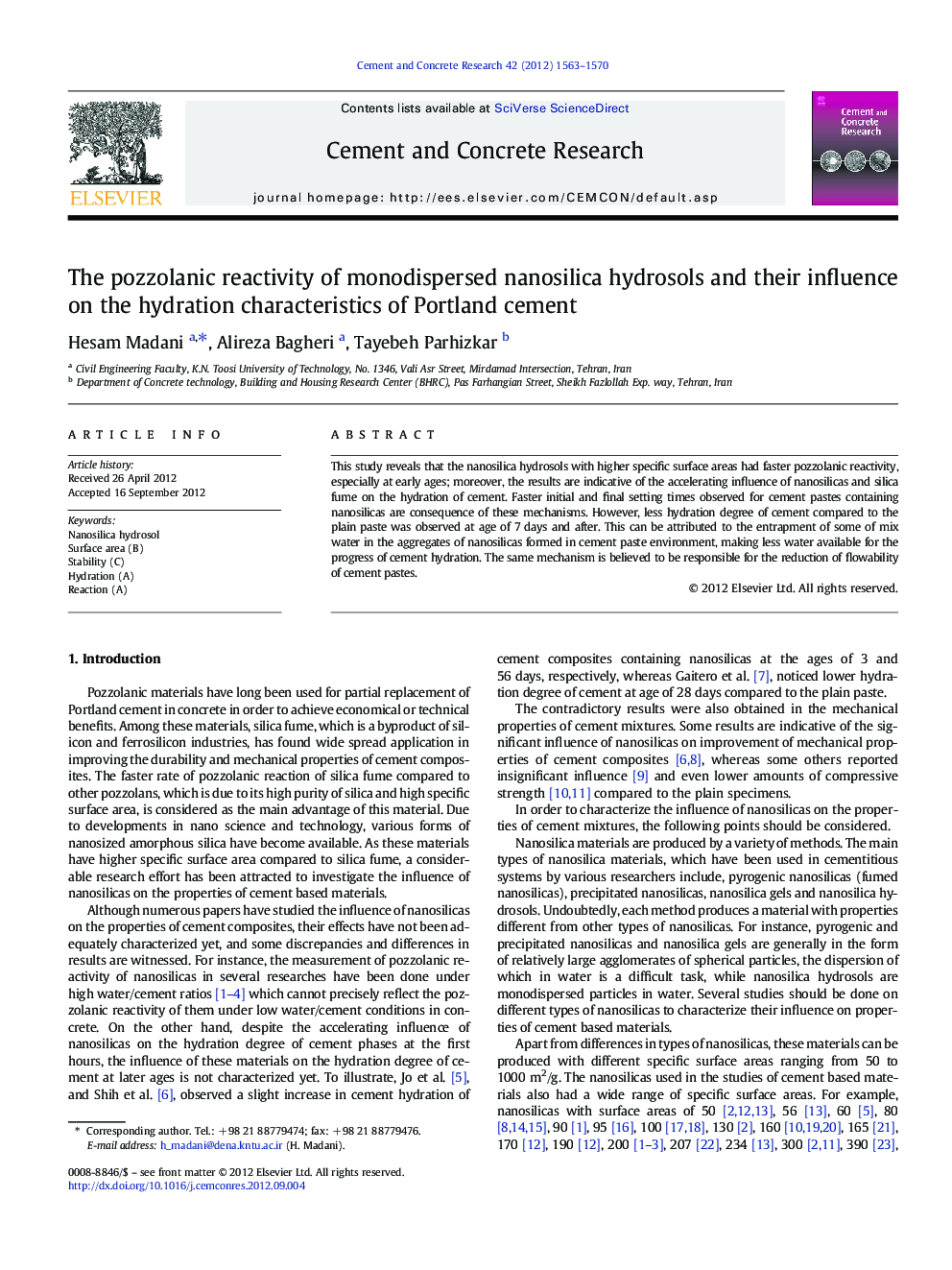| Article ID | Journal | Published Year | Pages | File Type |
|---|---|---|---|---|
| 1456583 | Cement and Concrete Research | 2012 | 8 Pages |
This study reveals that the nanosilica hydrosols with higher specific surface areas had faster pozzolanic reactivity, especially at early ages; moreover, the results are indicative of the accelerating influence of nanosilicas and silica fume on the hydration of cement. Faster initial and final setting times observed for cement pastes containing nanosilicas are consequence of these mechanisms. However, less hydration degree of cement compared to the plain paste was observed at age of 7 days and after. This can be attributed to the entrapment of some of mix water in the aggregates of nanosilicas formed in cement paste environment, making less water available for the progress of cement hydration. The same mechanism is believed to be responsible for the reduction of flowability of cement pastes.
